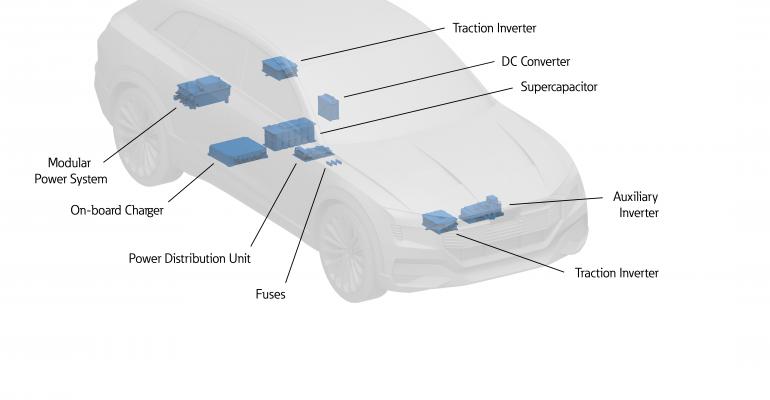SOUTHFIELD, MI – Eaton announces the creation of its new eMobility business focused on intelligent power electronics, power systems and advanced power distribution and circuit protection for the global electrified-vehicles market.
Employing 1,200 people at design centers and manufacturing locations in the Americas, Europe and Asia, eMobility is a combination of products, expertise and global production capabilities drawn from Eaton’s electrical and vehicle businesses.
Scott Adams, senior vice president-sales and product management for eMobility, tells WardsAuto the new business was formed in March out of divisions in Eaton’s electrical sector that already were operating in the company’s vehicle group.
“We are very bullish on the electrification market,” he says. “We wanted to have one voice for the customer, one team focused on vehicle electrification.”
Eaton plans to invest more than $500 million over the next five years to develop new products and technologies. That includes smart diagnostic technologies, intelligent power electronics and predictive health monitoring, the latter providing early warning of a part or system’s potential failure, Adams says.
The new business “is poised to capitalize on a global vehicle electrification market projected to grow to 15 million pure battery-electric vehicles and another 30 million hybrids, from mild to plug-in, by 2030,” Eaton says in a news release.
Adams declines to say how eMobility’s 1,200 employees are apportioned among the various areas of electrification expertise, but notes all are working on solutions for the differing demands of the Asian, European and U.S. markets.
China’s system of range-based credits has put virtually all emphasis on battery-electric vehicles, while Europe is transitioning away from fossil fuels toward 48V mild hybrids and the U.S.’s rate of electrification has lagged the other two regions, he says.
“All are adopting a different mix, but the products we are developing can be applied to all of those (requirements). You need to convert high voltage to low voltage,” Adams says.
“We see China being the (global) leader from a volume perspective,” he continues. “Eaton has a pretty large footprint in China to begin with. You’ve got to understand the market nuances and we have a whole team of people that are engaged with customers.”
Eaton has more than 15 years of expertise in developing hybrid systems with more than 15,000 HEV and PHEV systems on the road globally. The company says its high-voltage, fast-acting fuses are found in nearly 50% of all electrified cars, and a leading European battery-electric vehicle platform uses its power electronics.
Eatonʼs power-distribution and circuit-protection areas of expertise include fuses, supercapacitors and power distribution units (PDUs), while power electronics include converters and on-board chargers. Power systems include electric-vehicle transmissions for various medium- and heavy-duty applications, as well as a 48V regenerative accessory drive system for heavy-duty trucks.
PDUs, high-voltage fuses, hybrid and battery-electric transmissions and other existing electrified products will serve as the foundation for eMobility to grow as electrification increases, Eaton says.
The supplier is not directly involved in developing EV charging infrastructure, but the company’s Eaton Electrical arm “is a very large player in the infrastructure space” in terms of power delivery, Adams says.
The company projects its current electrified portfolio will account for approximately $300 million in revenue in 2018, while it reported total 2017 sales of $20.4 billion. Eaton forecasts revenues of $2 to $4 billion by 2030 as new products and customers are added to the eMobility portfolio.





